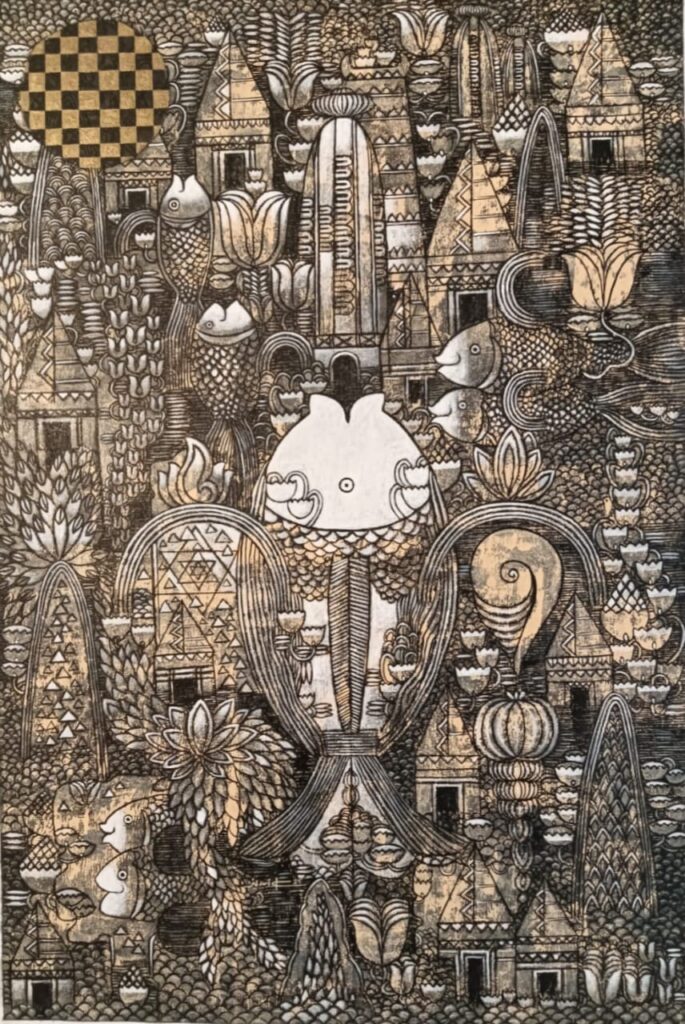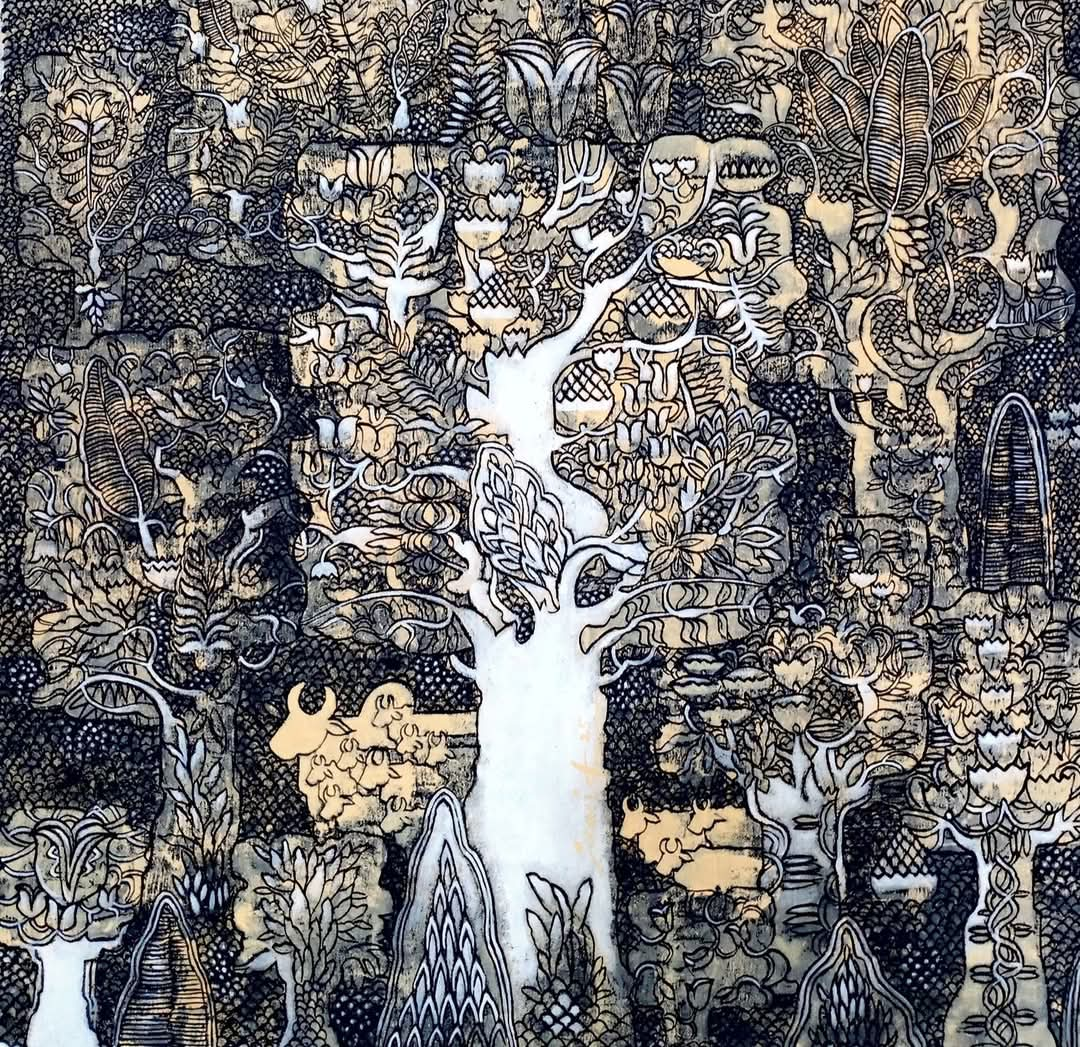List of Contents: Matsya Avatar By Anjiya Naik | Art Appreciation
- Introduction: Matsya Avatar
- The Cosmic History of the Matsya Avatar
- Bhagavata Purana
- Shanda Purana
- Matsya Purana
- Analysis – Matsya Avatar: Anjiya Naik
- Conclusion
Introduction: Matsya Avatar
Anjiya Naik’s “The Matsya Avatar” from the Divine Expression translocates us to the end of the Caksusa Manavantra, a period of time in the cosmic cycle of creation, during the reign of the sixth Manu, the progenitor of mankind according to Hindu cosmology. Once a great Pralaya, or cosmic dissolution, threatened the existence of manavas in the form of a great deluge. Narayan, the ancient preserver, incarnated as a giant fish and delivered mankind.
The Cosmic History of the Matsya Avatar
“Bhagavata Purana”
The “Bhagavata Purana” describes that once a demon named Hayagriva stole the Vedas, the archives of ancient knowledge, from the sleeping Brahma. Hayagriva, mad with power and greed, started causing great upheaval on the earth; Vishnu later appeared as a gigantic fish to defeat Hayagriva and retrieved the Vedas.
Shanda Purana
The Shanda Purana, however, narrates that it was Sankhasura, literally “conch shell,” who stole the Vedas from Brahma when Vishnu was in his meditative sleep. During Prabodhini Ekadasi, Vishnu Narayana woke up and assumed the form of the Matsya Avatara to defeat Sankasura.
Matsya Purana
The Matsya Purana, primarily associated with the Matsya incarnation of the deity Vishnu Narayan, reveals that Manu, a devotee of Narayana, was visited by Narayana himself in the form of a golden fish who warned him against a world-destructive flood. Manu constructed a boat and collected members of each species along with the sages, following the instruction of the deity. The sages, under the guidance of the Vishnu Avatar, attained divine knowledge of the Vedas.

Analysis – Matsya Avatar: Anjiya Naik
Naik incorporates his signature style—of hatching and a crisscross pattern—to breathe the sacred vision of the Matsya Avatar of the cosmic deluge into the canvas.
The checkered orb of gold and yellow on the top left of the canvas references the sun, standing as a solemn witness to the sacred rescue. The divine fish has the Sudarshan chakra on one side and the conch shell on the other side tied to its fins.
The painting stands out as a unique fusion of contemporary art, natural forms, and spiritual themes. The usage of traditional motifs grounds the artwork in the spiritual theme of rebirth and transformation. The lotus flower that floats on the surface of the canvas intertwines with fish tails floating along the current. The raised pattern of fish scales gives an uncanny texture to the artwork.
Conclusion
The textile quality invites the viewer to contemplate the spiritual and sensory element of the artwork, fostering a deeper connection to the painting. Anjiya Naik invites the admirer to immerse themselves in the dystopian world of ancient Yuga, reviving the age-old stories of the Puranas.

